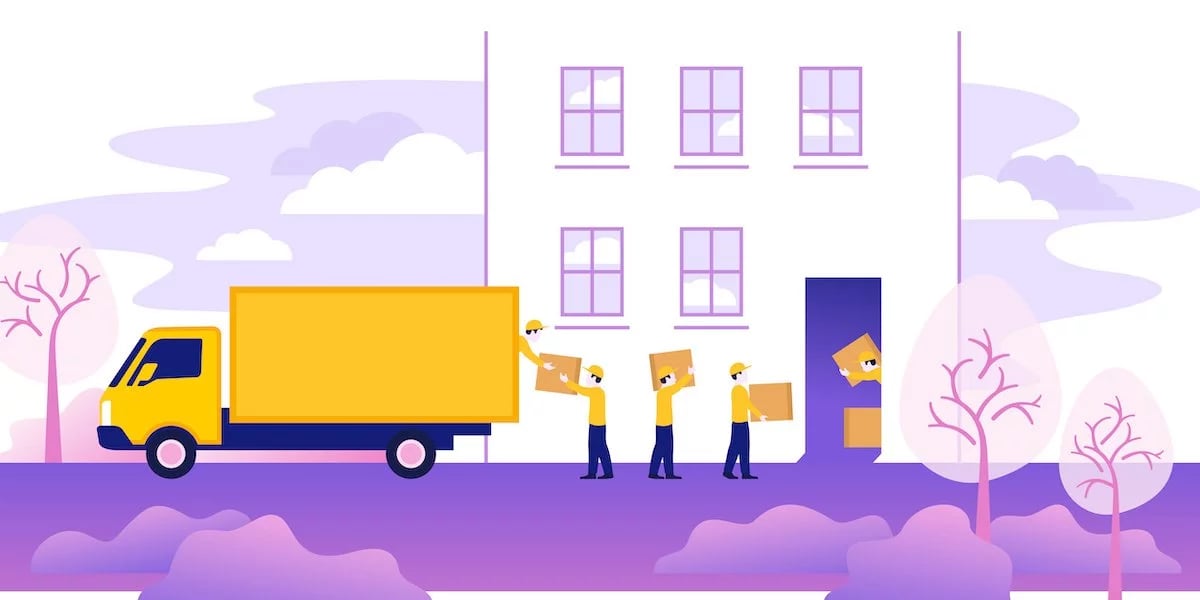Most delivery businesses are laser-focused on their customers. Whether you’re a retailer working to make sure that every delivery reaches the customer’s home at the right time, or a distributor or wholesaler working to ensure that your accounts all feel taken care of, you know that keeping the customer happy is the key to success.
 But what actually goes into making delivery customers happy? In other words, when your goal is to prioritize the customer, what is it that you should actually be prioritizing? Too often, the idea of what the customer wants keeps businesses from drilling down on what actually goes into the total delivery experience.
But what actually goes into making delivery customers happy? In other words, when your goal is to prioritize the customer, what is it that you should actually be prioritizing? Too often, the idea of what the customer wants keeps businesses from drilling down on what actually goes into the total delivery experience.
For instance, if you’re evaluating your technology stack with an eye towards boosting customer satisfaction, you might not immediately look at something like routing technology. It might feel like an operational necessity that powers important back office processes without necessarily impacting the customer in more than an indirect way. And yet, depending on the technology, this isn’t necessarily the case.
Ultimately, every aspect of your supply chain has some impact on whether you’re able to get the right goods to the right customer at the right time in the right condition. Your sourcing decisions help to make sure that you don’t have aggravating stockouts. Your warehouse management technology can make or break your ability to process customer orders easily. And your last mile delivery management software determines your ability to show up on time and keep customers in the loop.
So how does route optimization fit into all of this? Does it have a direct impact on customer satisfaction, or is it all about maintaining stable processes?
How Route Optimization Shapes Your Delivery Operations
It shouldn’t be too controversial to say that your routes ultimately have a big impact on your deliveries. But as we dive deeper we can see that this happens at a number of different levels.
The way you plan your routes, for instance, can play a defining role in your entire delivery management chain. If you plan routes a few times a year, e.g. for more complex distribution operations, you set yourself up with a delivery process that’s stable but static. If you’re routing orders dynamically overnight, you’re positioning yourself for efficiency, but not putting a process in place that enables you to easily handle last minute orders.

The results of these processes define customer outcomes. If you’re running static routes to a mix of large grocery stores, minimarts, and on-premise sites, your routing process doesn’t just determine what times and days of the week you show with cases. It also determines whether you can handle off-day delivery requests. If you have the agility in your processes to easily slot in an extra stop for a particular customer in a given week, the customer has an experience that builds trust and puts you in a position of a reliable partner. If you can’t, the customer experience is inflexible—it may even put them in a bit of a bind as they try to deal with the lunch rush the next day.
For B2C businesses like retailers, furniture and appliance sellers, and others, the same idea applies. Sure, you’re not likely to be rolling out static route plans when every day’s deliveries are different. But your overall routing process—and the technology that backs it up—determines how flexible you can be in responding to orders.
If you can plan optimal routes more quickly, you can move your order cutoff time back. This offers customers a lot more leeway in when they order relative to when they need their items—which can go a long way towards increasing the quality of their experience overall.
Why Customers Appreciate Flexibility and Agility
At the end of the day, your route optimization determines how flexible you can be in responding to customer requests. A flexible route optimization process lets you make changes without losing efficiency. More than that, it enables you to make changes quickly. Things move fast in the world of delivery management, and your technology needs to enable you to be just as fast in your responses.
There are a few ways that flexibility and agility in delivery planning directly impact the customer experience:
- Handling last-minute orders: Particularly in the B2C space, the ability to handle next-day deliveries boosts your brand for customers. Success for delivery businesses is all about making promises that you can keep—which is why the ability to make delivery promises around last minute orders is so crucial.
- Keeping up with customer demand: If a customer wants to increase the amount that they’re ordering from you, for instance, and needs to increase their delivery frequency, how easily are you able to adjust? If handling this kind of request is simple and straightforward, you can delight your customers by pivoting quickly to meet their changing needs.
- Decreasing delivery disruptions: The best route plans are the ones that you can actually execute. Plans that have been jerry-rigged to keep up with changing needs—rather than optimized by a flexible and agile software solution—are more likely to result in disruptions and delays when the rubber meets the road. These delays impact the customer directly, and whether you’re in the B2B or B2C delivery space they’re something you want to minimize if you’re focused on delighting your customers.
Simply put, your ability to be flexible and agile when it comes to route planning has a direct impact on your customers. When you’re able to adjust to changing circumstances easily, your customers benefit significantly. Route optimization and planning may feel like an in-the-weeds sort of logistics process, but done right it cuts straight to the heart of the customer delivery experience.
Delivering on Time with AI
So far, there’s one aspect of route optimization that we haven’t touched on: ETA accuracy. Your routing process and technology determines how well you’re able to estimate delivery arrival times, and the accuracy of those arrival times has a big impact on the customer.
After all, when it comes to keeping customers happy, delivering on time is paramount. And there’s really no way to generate accurate delivery ETAs by hand, or even with legacy routing technology.
This is where AI comes in. When your route optimization technology is powered by AI and machine learning algorithms, you can turn huge caches of data on past deliveries into powerful, accurate predictions. This data might include any number of factors that impact service time and therefore ETAs:
- Differences in driver speed and skill
- Historical traffic and weather patterns
- Differences in speed for different vehicles
- Differences in service time for different loads or delivery types
The list goes on. Frankly, the factors that can affect service time are too numerous for a human to deal with effectively. And even most legacy routing software solutions can’t get it right—resulting in inaccurate time windows and late deliveries.
AI-powered route optimization technology transforms this part of the last mile planning process. The right software can rapidly generate routes with ETAs that are highly accurate. The result is that delivery businesses are able to get customers their orders at the right time, every time. This kind of direct influence on delivery outcomes is hard to find in any other logistics processes—which is precisely why the right route optimization software is a critical investment in improved customer delivery experience.